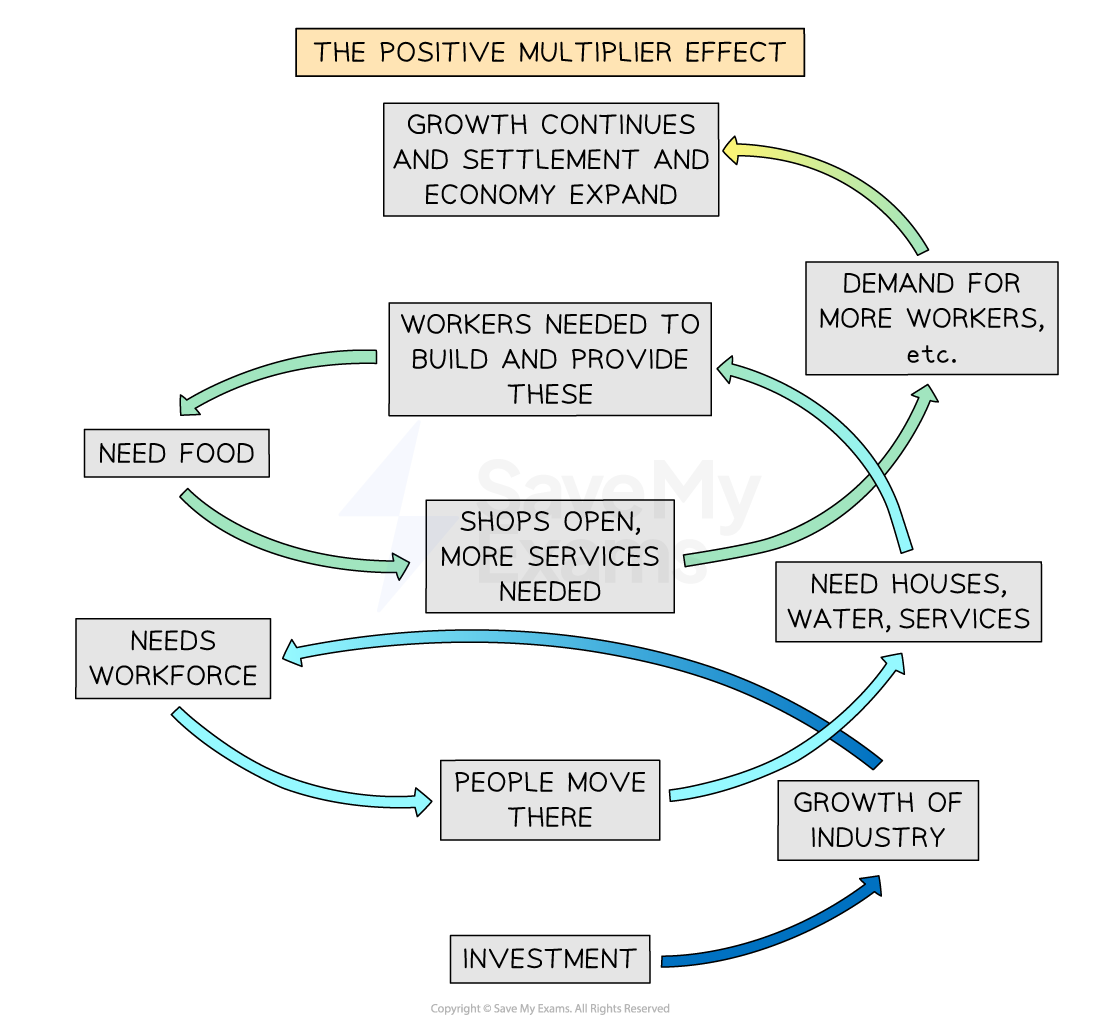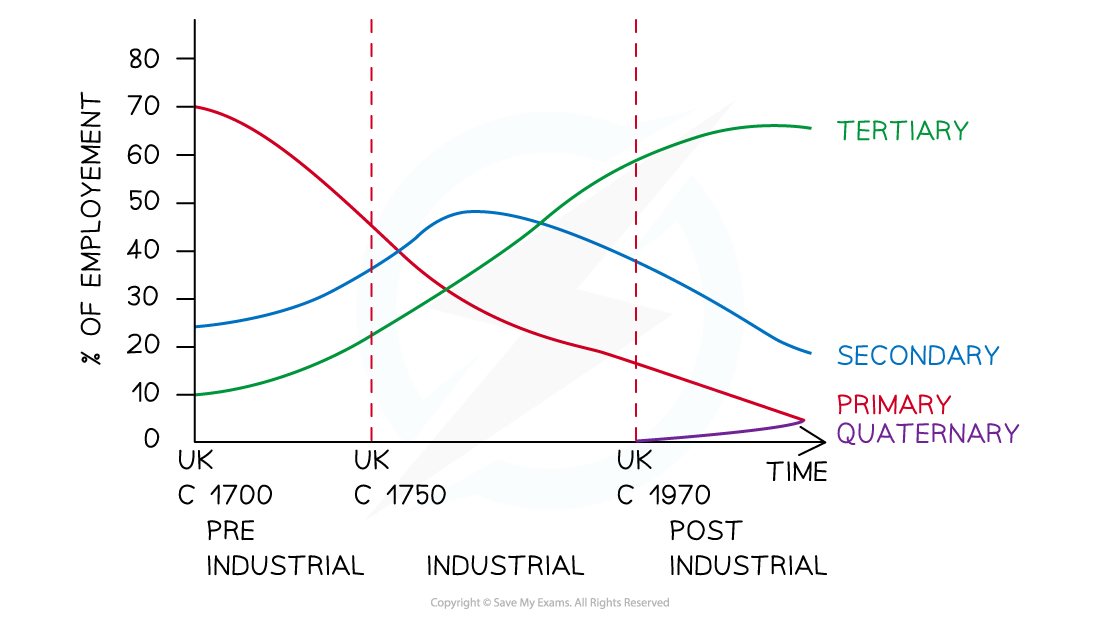Processes of Urban Growth
- There are economic, social, technological, political and demographic processes associated with urbanisation and urban growth
Table of Development Processes Associated with Urbanisation and Urban Growth
| Economic |
Urban economic growth is focused around ports and urban cores, and are called growth poles This encourages inward movement of people for jobs and better wages; As new workers earn, they spend – creating demand for additional companies The increased need for services such as infrastructure, housing, sanitation etc. creates jobs Businesses benefit from wider employment pool, generating larger profits, leading to increased jobs and wage increases - positive multiplier effect Primary sector economy changes from subsistence to commercial production, reducing available jobs and wages. This acts as a 'push' towards urban areas |
| Social |
Higher wages, access to healthcare and a better lifestyle are a pull factors and as more people move to urban areas they can become centres of cultural expression such as art galleries, museums and food Increase in social diversity and cultures creates tolerance and understanding, however, it can also generate fear and intolerance along with segregation Social inequalities are amplified in urban areas with pockets of deprivation and exclusivity clearly evident with gated communities and ghettos juxtaposed in some cities (e.g. Sao Paulo and Los Angeles) |
| Technological |
Most HDEs urban areas are hotspots for technological advances due to past industrialisation - Manchester was known as 'Cottonoplis' and was the world leader in cotton processing. Nowadays, these areas specialise in hi-tech research and development and use science parks such as Silicon Valley, California, and Thames Valley, Oxford to further attract talent and specialised employees EMEs are also seeing this growth with increases in factories in cities such as Mumbai, Dhaka and Shanghai |
| Political |
With increases in urban growth, inequalities are amplified with new a category of 'working' people arising Political response emerges to represent this new class of urban population with political reform focusing on issues surrounding the affect on urban life - housing, education, access to healthcare, working conditions and exploitation |
| Demographic |
Inward migration (internal and international) increases as a city's influence grows, changing the demography of its population Urban areas become culturally and ethnically diverse creating a mosaic of different areas - Little Italy, Chinatown etc. Age structure changes as cities are seen as never sleeping and ever changing, therefore, cities have a younger population as they seek the excitement and bright lights Many choose to stay and raise families and this also keeps urban areas as youthful populations |
- Urban pull factors - positive multiplier effect
- Higher wages
- Pace and excitement
- Improved education and healthcare
- Better job opportunities
- Public utilities: water, gas, electricity, etc.
- Government support



